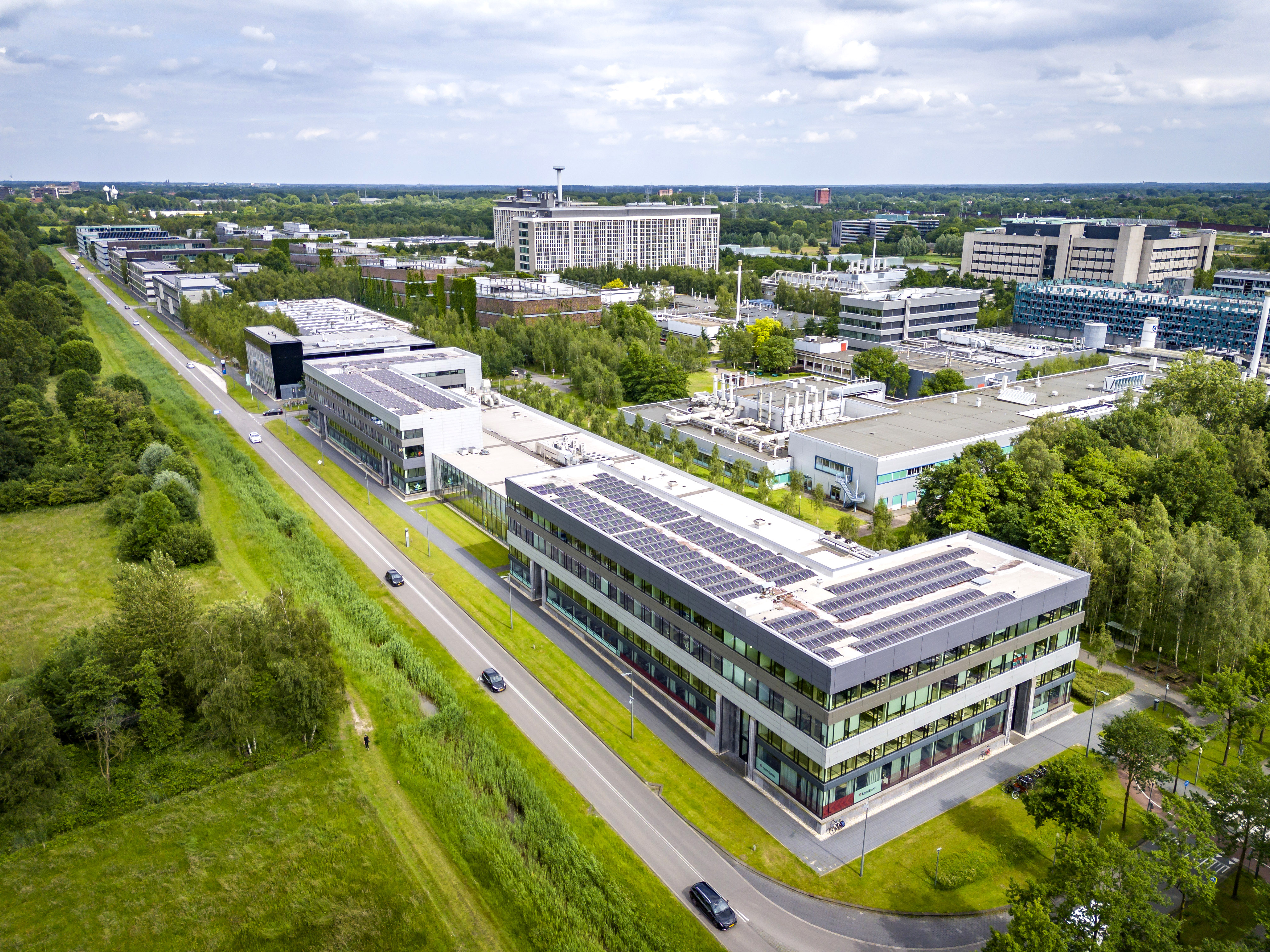


While the world is trying to keep up with groundbreaking technological and geopolitical developments, semiconductors and integrated photonics have become much more than just components of cutting-edge devices. They are the beating heart of technological transformation and Europe’s best chance to regain strategic autonomy.
Given the many billions of euros invested in semicon development in recent years and similar amounts waiting to be spent, High Tech Campus Eindhoven is ready to lay the next foundation for fulfilling the European ambitions. With its deep roots in proven high-tech, an unmatched IP portfolio, and ongoing R&D investments in semicon and photonics activities, this is the place to keep an eye on.
The European Chips Act, enacted in September 2023, aims to bolster the EU’s semiconductor ecosystem by enhancing research, development, and manufacturing capacities, thereby increasing Europe’s global market share in semiconductors from less than 10% to 20% by 2030. With a budget of €43 billion, the Act focuses on strengthening technological leadership, ensuring supply chain resilience, and reducing external dependencies.
In the heart of Europe’s Brainport region lies High Tech Campus Eindhoven (HTCE), a leading innovation ecosystem that has not only nurtured giants like Philips, NXP, ASML, Intel, and Signify, but is also paving the way for future giants like SMART Photonics and Axelera AI. With its rich heritage rooted in collaborative research, spinoffs, and public–private partnerships, HTCE has created a forward-looking ecosystem where advanced technology meets agile commercial opportunity. HTCE services semiconductor and photonics companies, facilitating their growth through state-of-the-art facilities, strategic support, and a vibrant community that fosters knowledge sharing and entrepreneurial spirit. Moreover, heterogeneous integration, combining electronic and photonic chip production, enables new products and applications.

Discover Europe’s semiconductor and photonics value chain at High Tech Campus Eindhoven:
download the full brochure featuring 42 key players in the HTCE Semicon & Integrated Photonics ecosystem ↓
With some 12,500 "inhabitants," the Campus hosts a large part of the roughly 15,000 highly skilled semicon experts in the Netherlands, who are all working in a 200km national radius. Driven by both research excellence and entrepreneurial ambition, HTCE’s landscape is a living showcase of technological evolution. From ISO-compliant, plug & play cleanrooms and rapid development and construction capabilities to tailored support in permits, HTCE’s infrastructure is designed for growth and scalability. Its location amid 300 high-tech companies, world renowned research institutes, and dynamic startups provide an environment where collaboration isn’t just encouraged but is essential. As global pressures mount and technology demands become more sophisticated, HTCE’s role as an enabler and an innovation partner is more critical than ever.

In 2024, semiconductor sales are expected to reach 611.23 billion U.S. dollars worldwide (source: WSTS, SIA). The semicon and photonics sectors are redefining industries from healthcare and automotive to manufacturing and communications. In Europe, investments are intensifying amid trends such as edge AI, autonomous systems, and the growing demand for energy efficiency. The shift toward localized, smarter production methods is more than a regional strategy; it responds to a worldwide call for sustainable and agile innovation. This is also shown in sales expectations: Statista forecasted the revenue in the semiconductor market in the Netherlands to continuously increase between 2024 and 2029 by in total six billion euro (+51.37 percent). After the sixth consecutive increasing year, the revenue is estimated to reach 17.66 billion euro and therefore a new peak in 2029.
These technologies drive the next wave of innovations on the global stage, from ultra-efficient data processing and AI at the edge to smarter sensors that revolutionize healthcare and automotive safety. In Europe, the narrative is shifting
as regional investments accelerate the transition from research to commercialization. Europe’s focus on strategic autonomy and the role of the semiconductor industry, coupled with a unique blend of technical expertise and collaborative spirit, position the region as a thriving hub for semicon and photonics advancements.
The Brainport region, in particular, is proof of this transformation. With a heritage steeped in innovation - built by organizations like Philips, Eindhoven University of Technology (TU/e), and TNO - Brainport has long been a beacon for technical excellence. The region’s ecosystem is now evolving to meet the demands of a digital future where smart technologies, autonomous systems, and energy-efficient solutions are paramount. Here, research institutes and industry players are converging to form dynamic partnerships, ensuring that Europe is not just a follower but a leader in next-generation technologies.
As policymakers and investors recognize the strategic importance of semiconductor and photonic solutions,
Brainport’s role becomes even more critical. The convergence of digital transformation, AI integration, and
sustainable design in this region marks a turning point in the global tech landscape.
With a forward-looking vision, HTCE stands ready to attract international talent, drive entrepreneurial ventures, and catalyze the innovations that will define the future of technology. In 2023, 43% of all Dutch patents applications were created on HTCE (source: Holland Invest). The Netherlands ranks #1 in the world for Intellectual property receipts (source: Wipo global innovation index)
High Tech Campus Eindhoven encapsulates a comprehensive semiconductor and integrated photonics value chain, from chip design (HTCE has the highest number of IC designers per 1 million in Europe, according to Source: ChipNL) and equipment manufacturing to testing and design software, with (advanced) packaging starting to grow. The Campus serves as a mini version of the entire industry, with key players operating across almost every stage of the chain. Companies on Campus span diverse segments:
This multilayered ecosystem creates opportunities for additional collaborations, supply chain integration, and accelerated innovation. By nurturing this end-to-end chain, HTCE not only supports individual companies but also serves as a physical cluster of the industry.
Discover Europe’s semiconductor and photonics value chain at High Tech Campus Eindhoven: download the full brochure featuring 42 key players in the HTCE Semicon & Integrated Photonics ecosystem ↓